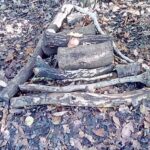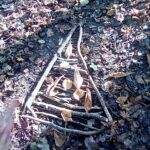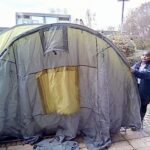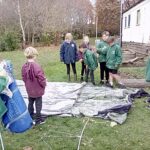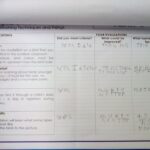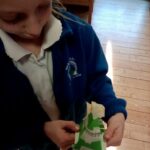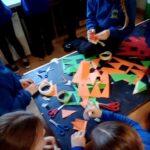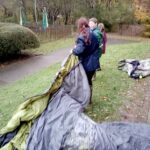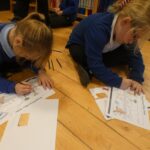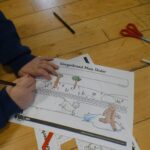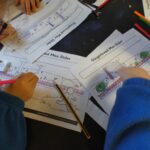Understanding Sliders in Design and Technology
In the world of DT (design and technology), sliders are really important because they help control how things move. For example, think about sliding doors. When we open or close a sliding door, we use a slider mechanism. This is a gentle and smooth way to move the door, without it jumping around or making too much noise.
Another example is the slider mechanism in a drawer. When we pull a drawer open or push it close, a slider helps it move along the tracks smoothly. It also stops the drawer from falling out when we pull it all the way open. This is a really important job!
You can think of a slider like the wheels of a train. The wheels help the train stay on the tracks and move smoothly from one station to another. In a similar way, sliders keep things on track and control their movement, making sure everything works smoothly and safely.
Understanding Shell Structures in Design and Technology
In Design and Technology, we learn about nets and shell structures. A net is a flat shape that can be folded and glued to make a 3D (three-dimensional) object, like a cube or a pyramid. Imagine you have a flat piece of paper with squares and triangles drawn on it. By cutting it out, folding it, and sticking the edges together, you can make a 3D shape.
A shell structure is like the outer shape of a building or a bridge. It’s the strong, curved shape that covers and protects the inside. Imagine a shell of a turtle or a snail – it’s like a strong, protective cover that keeps the animal safe.
Nets and shell structures are important because they help us understand how shapes work in 3D. When we design and make things, we need to think about how to turn flat shapes into strong, 3D structures. Think of making a cardboard box – we need to understand how to fold and stick the flat pieces together to make a strong, useful box.
Understanding Frame Structures in Design Technology
In design and technology, a frame structure is like a skeleton for a building or any object. Just like our bones give our bodies a strong structure, frame structures provide strength and support to the things we make. They are made up of strong materials like wood, metal, or plastic that are put together to form a strong, stable shape.
Imagine building a house using Lego blocks. When you connect the blocks together, they become strong and can hold up the roof. Frame structures work in a similar way – the parts are put together to make a strong shape that can hold weight or resist forces like wind and pressure.
Frame structures are all around us. Houses, bridges, bicycles, and even some playground equipment are all examples of things that use frame structures to stay strong and stable.
Years 1 and 2:
This week, our Year 1 and 2 students dive into the fascinating world of sliders. Beginning with a discussion on everyday items featuring sliders, such as sliding doors and touchscreen sliders, the lesson progresses with engaging demonstrations by our teachers. Key vocabulary like ‘slider,’ ‘mechanism,’ and ‘motion’ will be introduced. In the exciting hands-on activity, students work in pairs to design and craft their unique products, incorporating sliders using materials like cardboard, paper, and sticks. The lesson concludes with each pair presenting their creations, fostering peer assessment and feedback.
Key Concept and Retrieval Questions:
What are some examples of everyday objects with sliders discussed in the lesson?
How did the teacher demonstrate the concept of sliders using simple mechanisms?
What materials were suggested for the students to use in creating their sliding mechanisms?
Years 3 and 4:
For Year 3 and 4, our students explore the concept of shell structures. Starting with essential vocabulary like “2D,” “3D,” and “construction,” they delve into the characteristics and benefits of shell structures using visual aids and examples. The practical activity involves small group collaboration to design and construct their own shell structures, prioritising strength and stability. The session concludes with group presentations, encouraging peer evaluation and constructive feedback.
Key Concept and Retrieval Questions:
What are the key vocabulary terms introduced in the lesson, and how are they relevant to shell structures?
What criteria were emphasised during the activity, and why is strength, stability and materials used important in shell structures?
In what ways did the lesson encourage peer evaluation and feedback?
Years 5 and 6:
In Year 5 and 6, students embark on a lesson centred around frame structures. Kicking off with observations of structures like the buildings and bridges, students discuss their purposes. Then introducing the concept of frame structures, showcasing differences from solid structures. Groups then collaborate to design and build frame structures using paper straws and tape, aiming to utilise their knowledge of shape. The class concludes with lively presentations, encouraging discussions and questions that enhance understanding.
Key Concept and Retrieval Questions:
What types of frame structures were discussed at the beginning of the lesson, and what did students notice about them?
How did the teacher explain the concept of frame structures and differentiate them from solid structures?
What materials were provided for the students to use in creating their frame structures?



